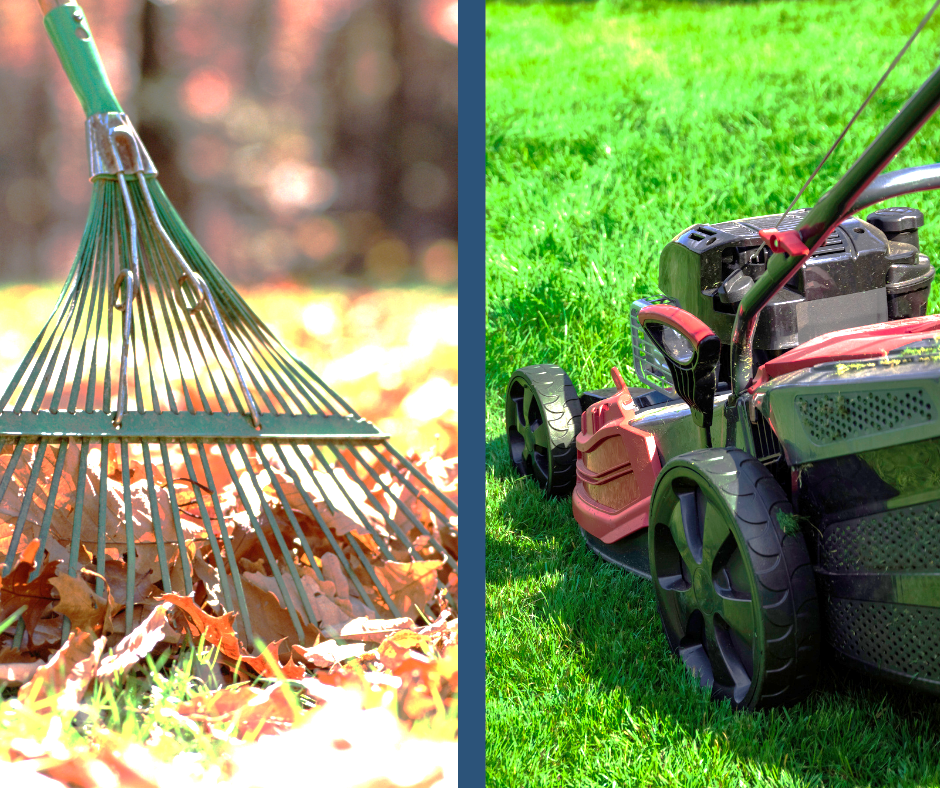Mid-fall gardening tips and tasks

I started to think Mother Nature just refused to put away her summer wardrobe with the temperatures, in the 80s last week. But finally, leaves are starting to cascade down, and some cooler weather is here. Gardeners vary in their response to the end of the growing season.
There are the people who pulled up their vegetable gardens in late July when they felt they have had enough frozen and canned (I know … who does that?). And, after the first cool day, many start to cut down their perennials and dump their annuals. And then on the other hand, there are people who start fall cleanup for the 2023 garden, sometime in early spring 2024.
I make no judgment, your garden, your choices. You have dominion over your personal Eden. But there are advantages and disadvantages for your garden and those who live in it — your plants and wildlife –for whatever strategy you choose in the fall garden.
One phrase that has been getting a lot of play these days is “leave the leaves.” This practice advocates leaving fallen leaves and garden refuse until mid-spring and is seen as eco-friendly. Not if you want to keep good quality turf, it isn’t.
Leaving leaves (whole leaves) on your turf over winter may cause you to have amoeba-looking greasy dead spots in the spring. Leaves can mat together and smother grass under heavy snow winters. People will sometimes ask me if they had grubs over the winter, as the snow subsides.
Grubs are insect babies (of beetles), and like all insects are cold-blooded and are not active in cold temperatures. Even though that damage looks like a bad case of turfgrass grubs, you either left leaves on your turf or didn’t mow late enough. And under snow, the leaves and too-tall grass rotted. So, if you are a lawn ranger, you definitely want to add leaf removal and continued mowing to your fall garden tasks.
Can you mow your leaves and “leaf” them on the grass? Like any good politician would respond — it depends. Leaves double or triple mowed might be small enough to sift down and decompose, but if you have several trees, it is better to mow and move them.
Every year, I see hundreds of those landscape waste bags standing at attention lined up like soldiers in uniform on garbage day, and I think, what a waste. Literally.
Leaves can be free, organic fertilizer and an excellent food for the composter, whether you choose to just rake them into a pile in an unused corner in the garden or have some kind of compost container. I admit it, I am the lazy leaf collector. I never rake, I mow. Actually, I double-mow my leaves. Sure it looks a little weird when neighbors watch me empty my lawnmower bag and then re-mow the contents.
But what wonderful leaf confetti I have! Smaller pieces equal quicker decomposition. I will use this leaf confetti to dig into my vegetable garden in late October on a dry day. If you are a vegetable gardener who likes planting those early spring crops like salad greens, scallions, radishes and peas. Now is the time to prepare at least that portion of your garden.
If you wait till spring, and we have a wet, late winter, you won’t be able to work the soil up for those early crops until it is the brink of summer. Preparing either the entire vegetable garden or at least a portion of it now, gives you a big advantage to get those cool season crops in early.
But even if you don’t plant early crops, cleaning up the vegetable garden in the fall can be both a good and not so good idea. See, our insects don’t all migrate south for warmer places to spend the winter. Many spend it in some form — egg, larva, cocoon/chrysalis, or adult — in our leaf litter.
That is where that phrase “leave the leaves” comes from. Many of our beneficial insects set up a winter home right where they spend the summer. Moths, butterflies, native bees, and a host of our insect friends get swept away into those landscape waste bags.
A native bee you may not ever have even heard of, the squash bee, responsible for a great deal of pollination of your zucchini, cucumbers, gourds, and melons overwinters in the stalks of this year’s plants. So leaving the refuse intact increases the population.
But as almost always in nature, there is a flipside. Enter cucumber beetles. They also overwinter under here, as adults, under leaf litter. I was horrified one warm February day, when I was doing, I will admit it, fall clean up from the previous growing year, to find hundreds of adult cucumber beetles under some hollyhock leaves. Cucumber beetles are one of the vectors (insects that transmit disease) of the deadly (to plants, not us) bacterial wilt.
Similarly, good, and bad, lots of birds and other wildlife feast on the seedheads of many of our flowers over the winter. Great for them, but if you are trying to stop spread of some of our most prolific reseeding plants, or if you prefer the “clean look” of bare space in the non-gardening season, you have to make a choice.
Whichever you choose, take time to enjoy the glory of the Midwest’s four seasons!